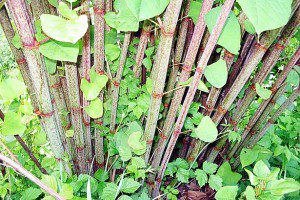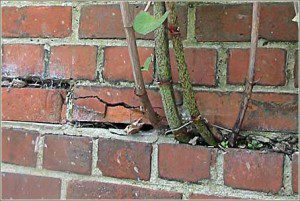In 1825 Japanese Knotweed was introduced into the UK as an ornamental plant as a result of the Victorian’s love of new and different species during an age of travel, discovery and industrial development. It must have been an exciting era and one with perhaps, no real thought of why certain plants or animals didn’t naturally exist in this country. Nature has a great knack of balancing things without any interference from us and therefore, when we introduce something that doesn’t naturally belong here, we upset the balance.
The grey squirrel brought here from North East America in the 1870s, decimated our native red species which now exists only in comparatively small numbers in few parts of the UK. Likewise the Japanese Knotweed with its prolific growth of up to 20cm a day in the right conditions now costs the UK economy £166 million per year in terms of treatment and home devaluations. It has been known to grow through floors to the point of it being more economical to knock down a property and rebuild rather than try to treat and remove the problem. It can also affect your chances of getting a mortgage on a property where it is present.
The trouble with Knotweed
So what is it about this particular, supposedly ornamental plant that causes so much havoc? Well apart from the rapid growth rate, which allows it to quickly overwhelm other garden plants and also wild native plants and weeds, it’s virtually impossible to get rid of once established. It doesn’t produce seeds but can spread from the smallest sections of rhizomes (stems that grow underground) which can survive through top soil movement or construction traffic. Given the opportunity it will grow through concrete and tarmac and reach heights of over 2 metres producing wide heart shaped leaves a d white flower tassels around 15 cms long. The roots can reach a depth of 3 metres which makes it virtually impossible to dig out.
Wondering what they do in Japan? The natural habitat of this nuisance perennial is a volcanic landscape where the climate and deposits of ash on a regular basis keeps the plant small, its survival thanks only to the deep root system storing energy. And here in the UK? If you can dig it out before it gets established, it still needs only 0.8g of root to grow back. As it is now classified as controlled waste under the Environmental Protection Act 1990, you can only dispose of it at a licensed landfill site. You could try drying it out and burning it or burying it at least 5 meters deep but that isn’t much of an option for your average householder. It cannot be disposed of in household waste or green collection schemes.
Getting rid of it
These are the other things that have so far been recommended, in all cases call an expert:
- Chemicals containing glyphospate but this can take years with professional treatment costing thousands. There are a range of well-known over the counter products but these may not be as effective on well-established tall plants. It could take 3 or 4 seasons to finally get rid of this persistent plant.
- Trials are being conducted on some sites in the UK using a plant louse for biological control which could become available in the longer term and is estimated to become widespread in five to ten years by natural spread. The bug aphalara itadori has only been bred in captivity so far but seems to be the best solution to reducing the vigour of the plant.
There are few places in the UK where this plant has not reached – the Isle of Orkney was safe – so watch out for it and if you see it in your garden or neighbouring gardens, get ready to do battle – legally of course!
